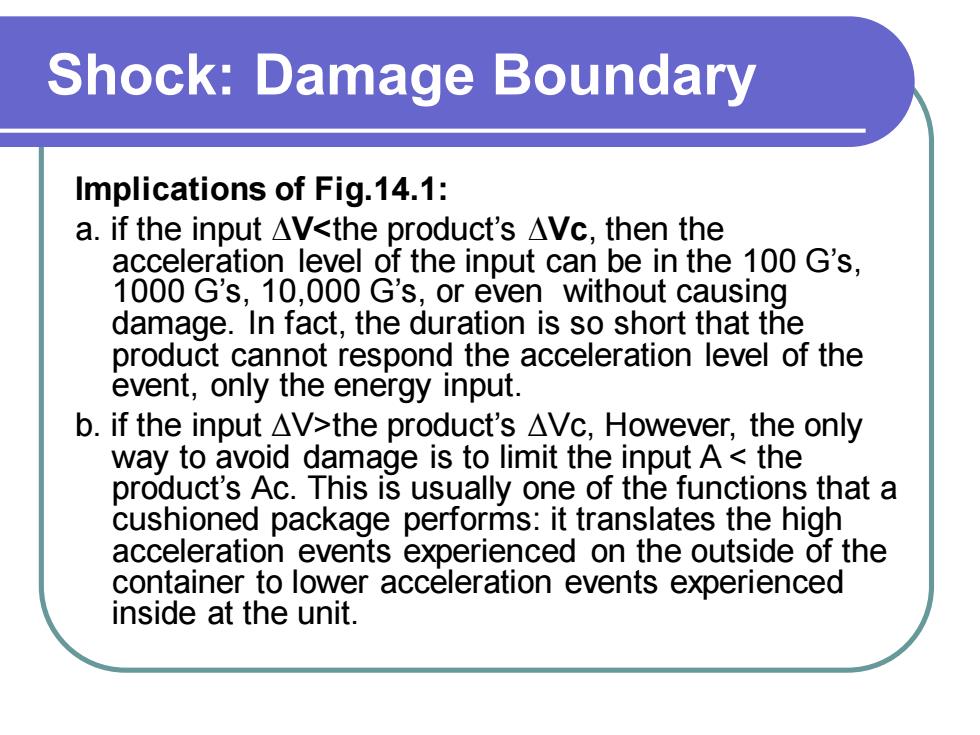正在加载图片...

Shock: Damage Boundary Implications of Fig.14.1: a. if the input ∆V<the product’s ∆Vc, then the acceleration level of the input can be in the 100 G’s, 1000 G’s, 10,000 G’s, or even without causing damage. In fact, the duration is so short that the product cannot respond the acceleration level of the event, only the energy input. b. if the input ∆V>the product’s ∆Vc, However, the only way to avoid damage is to limit the input A < the product’s Ac. This is usually one of the functions that a cushioned package performs: it translates the high acceleration events experienced on the outside of the container to lower acceleration events experienced inside at the unit.Shock: Damage Boundary Implications of Fig.14.1: a. if the input ∆V<the product’s ∆Vc, then the acceleration level of the input can be in the 100 G’s, 1000 G’s, 10,000 G’s, or even without causing damage. In fact, the duration is so short that the product cannot respond the acceleration level of the event, only the energy input. b. if the input ∆V>the product’s ∆Vc, However, the only way to avoid damage is to limit the input A < the product’s Ac. This is usually one of the functions that a cushioned package performs: it translates the high acceleration events experienced on the outside of the container to lower acceleration events experienced inside at the unit